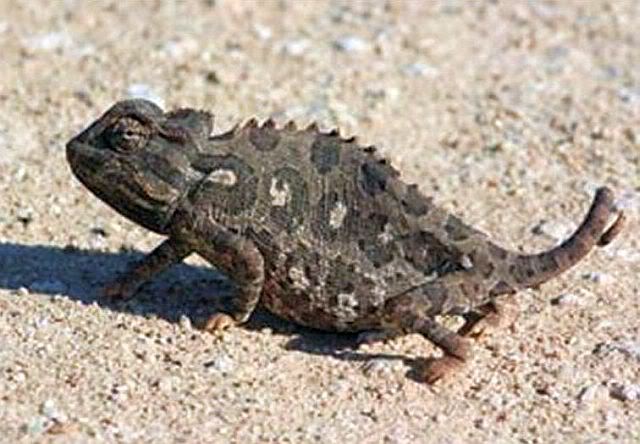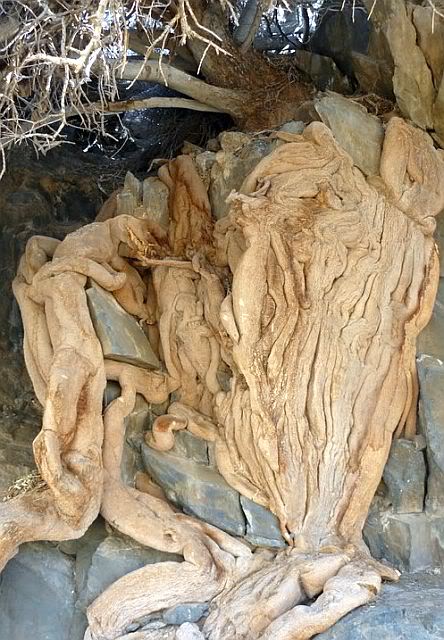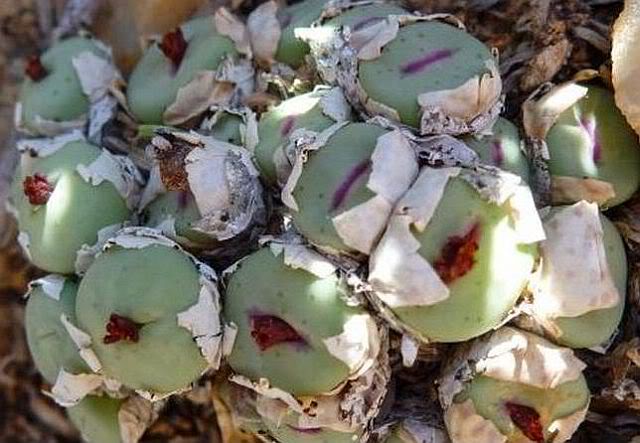
The Namaqua Chameleon (Chamaeleo namaquensis) is a little known but extraordinary species of chameleon, due to its habitat, feet, colour changing ability and speed.
Most chameleons are arboreal and their feet comprise of five toes which are fuses into groups of three and two, which allow them to grip branches. The Namaqua chameleon can splay these ‘toes’ to allow it to run over flat ground.
Chameleons use specialised cells, called chromatophores, to change colour. Chameleons use this skill in different ways, for threat displays, mating displays and camouflage. However the Namaqua chameleon uses this evolutionary ace to control its body temperature. It can change some of its skin to white to deflect the sun and other parts a dark brown to absorb the sun. This helps to keep cool during hot days in an arid environment and keep warm during cold nights.
Most chameleons are slow movers, they are ambush predators, but food is scarce in Namaqualand and when available fast moving. It eats, locust, crickets, beetles, lizards and even small snakes (adders), but it feeds mostly on beetles and may eat up to 200 beetles a day. In order to catch these it can run at unusually high speeds for a chameleon.




 .
.  Here is the recipe:
Here is the recipe: Collect the thick fleshy roots.
Collect the thick fleshy roots.  Cut these into short sections.
Cut these into short sections.  Push out the hard inner cores.
Push out the hard inner cores.  Then pound the ring like sections and spread them out in the sun to dry.
Then pound the ring like sections and spread them out in the sun to dry. When dry the roots are burnt in an iron pot or pan until brown and starting to smoke.
When dry the roots are burnt in an iron pot or pan until brown and starting to smoke. Add a little brown sugar and some fat or lark.
Add a little brown sugar and some fat or lark.  Ground the roots, sugar and fat mixture.
Ground the roots, sugar and fat mixture. Make coffee and enjoy.
Make coffee and enjoy. and climbed up one of the mountains
and climbed up one of the mountains  to find these greenies
to find these greenies
 I don't know what else to tell you or to post, so here is another intermezzo
I don't know what else to tell you or to post, so here is another intermezzo  with some
with some 
